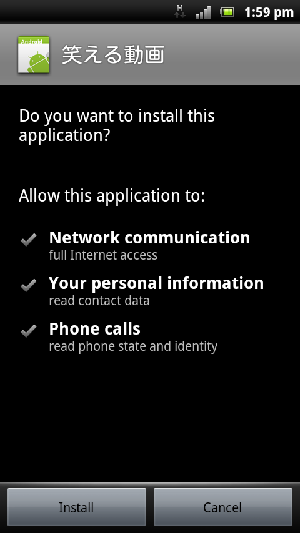Researchers at Symantec recently identified 29 malicious apps in the Google Play marketplace targeting Japanese Android users.
All 29 of the apps have been taken down by Google, Symantec said, but not before a wave of installations that may number as high as 300,000.
“The apps share common programming code so we can assume it is a sole individual or an organization who is committing the crime,” explained Joji Hamada, a threat analyst with Symantec Security Response. “The very first app we confirmed appeared on Google Play around February 10 and more followed until late March.”
 “Originally the apps posted were not game related, but were random ones including apps of an erotic nature, a contact management app, a recipe app, and a diet assistant app to name a few,” Hamada continued. “But the number of downloads were low. Then in late March, a bunch of apps with names ending in “the Movie” were released. These apps caught the attention of a large number of users who installed them.”
“Originally the apps posted were not game related, but were random ones including apps of an erotic nature, a contact management app, a recipe app, and a diet assistant app to name a few,” Hamada continued. “But the number of downloads were low. Then in late March, a bunch of apps with names ending in “the Movie” were released. These apps caught the attention of a large number of users who installed them.”
Google declined to comment on the finding, but a list of the applications can be found on the Symantec blog.
In its 2011 Mobile Threats Report, Juniper Networks reported the amount of malware aimed at mobile devices had jumped 155 percent during the year, including a 3,325 percent increase in malware targeting the Android platform. In the case uncovered by Symantec, if the apps are installed and opened they connect to an external server prepared by the attackers to download MP4 files to play videos. However, the phone number of the device along with details such as the email addresses of individuals in the phone’s Contacts are stolen and uploaded to the server.
The stolen data is then posted to a hosting server known to distribute variants of Android.Oneclickfraud, a Trojan that looks to force users into paying for a pornographic service. The Android.Oneclickfraud variants try to exfiltrate data to that server as well, Hamada added.
“The purpose of this attack is not clear; however, a strong assumption is that the scammers are harvesting emails addresses and phone numbers to use for their next round of malicious activities, such as spamming scams by email or calling individuals to attempt to defraud them,” the researcher blogged. “So the information could be sold to criminal groups.”
Related Reading: Separating Fact from Hype on Mobile Malware
















